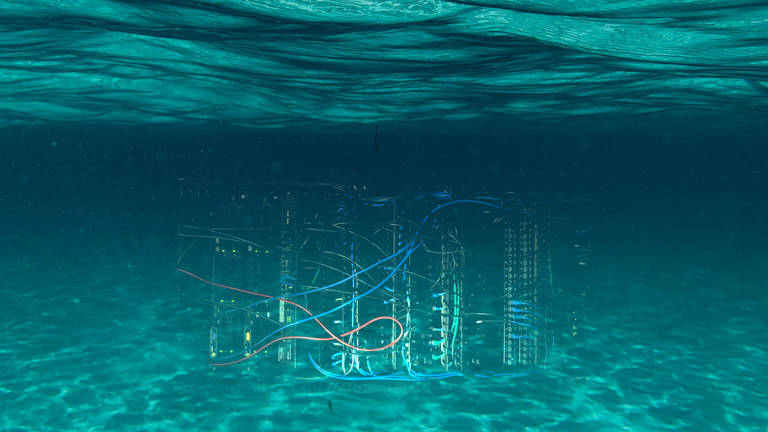
Eight million data centers around the world process our entire online life thousands of times per second, but Microsoft may have just rewritten this growing industry, and it may be for the better as we can rely on cloud-based services that are expected to be at an all-time high in 2021 due to the massive online shift driven by the ongoing covid-19 pandemic.
The need for energy and time efficient data centers is of critical importance. Microsoft has just reached the end of a two-year, second-stage experiment where they sinked our data to the ocean floor and here's why this is big news.
On July 9, 2020, the tech giant brought up what it calls its northern isles a 12.2-meter-long steel cylinder from the ocean floor, the giant pipe tube stayed feet below the surface for two years, collecting data that was later analyzed by engineers. Microsoft decided to do this long-term experiment 10 miles off the coast of Scotland in the Orkney Isles Archipelago.
Land-based facilities face the serious threat of corrosion, while temperature fluctuations are costly to the cooling systems required to keep the servers at their highest operating temperature.
The constant full traffic of cleaning and maintenance teams can of course also be a cause for concern with bumps jostles and genuine accidents put the equipment's longevity at risk. Sinking this facility in an airtight watertight container alleviates some of these problems.
Consistently cool temperatures, for example, help with thermoregulation, which means less energy is needed to keep the computers cool, a plus for the environment as well as for our pockets.
The flexibility of Project Natick, the codename chosen for this research exercise, helps alleviate the concerns that traditional land-based datacenters have about natural disasters and other attacks.
After all, infiltrating a traditional datacenter with its highly skilled armed security seems easy compared to reaching it on the seabed.
More than half of the world's population lives within 120 miles of the coast, which is approximately a two-hour drive away while conventional warehouses are located miles away from cities, often in the middle of nowhere.
Having access within a stone's throw means a shorter distance for data to travel, saving energy, and providing consumers with lightning-fast access.
Due to the shift in cloud-based computing, experts believe it would be more beneficial in terms of energy and give customers stable access to multiple smaller datacenters that are disperse among populations rather than drawing from an off-site warehouse.
The project envisions its offshore submerged vessels being powered by partner wind farms previously considered an unreliable power source. The uninterrupted winds at sea make the perfect pairing along with the fiber optic cable connecting the tubes to the land which are required for data transfer.
A tangled power line could provide a backup source thought up at microsoft's thinkweek 2014 an annual event where employees share advanced new ideas.
The project required multinational efforts to achieve this. For example, the cylinder was built by the French shipbuilding navy before it was loaded with its servers and sent on its way to Scotland. The European Ocean Energy Center installed it together with its underwater cables before it was sunk in June 2018.
These sea dwellers are built to survive half a decade before returning to the surface for a full health check. Aside from the fact that the Project Natick was largely a success, we know that exploiting an environment that has remained virtually untouched for millennia is a huge no-go, but we must remember that even in their thousands these data centers would hypothetically take up less than a single percent of the seafloor.
Cloud experts estimate that nearly two percent of the planet's entire carbon footprint comes from datacenters, so any effort to reduce this is certainly a good thing. Yes, say the critics, but what about its impact on sea temperature? The ocean's naturally cool waters help dissipate that heat. However, the effects on the surrounding water are negligible.
Of course, even a single degree can destroy the seascape, but the change measured a few meters downstream is said to be a fraction of a degree that is barely noticeable even with the most advanced measuring tools.
On the other hand, Human population will benefit for years from the economic and social-environmental benefits, which are critical in today's climate. It's promising to see that even one of the world's most dominant companies can show some compassion for the environment.









